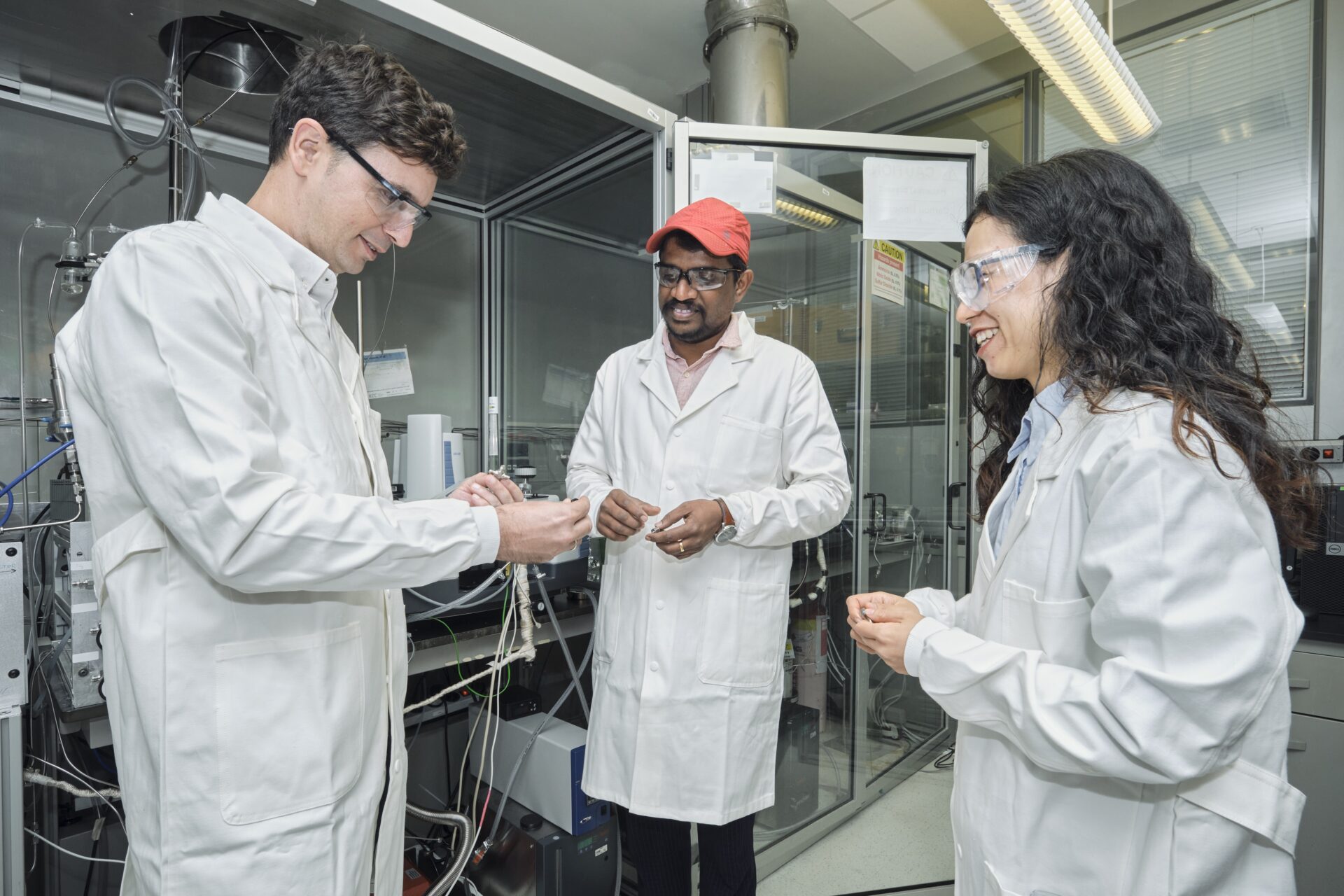Biweekly Research Update

Below is a list of the latest research achievements at KAUST
Professor Stefaan de Wolf's team has developed a highly efficient tandem solar cell by optimizing the connection between silicon and perovskite layers. This approach boosted the overall conversion efficiency to 32.5%, which was the highest reported for this technology at the time.
The laboratory of Associate Professor Pedro Castaño has combined multiple spectroscopy and reactor technologies to reveal new details on catalyst function and reaction mechanisms. The new approach is expected to accelerate the development of efficient and sustainable industrial processes.
As more people come online, the demand for high-speed data increases and competition for limited frequencies rises. In response, Professor Mohamed-Slim Alouini and his team have developed a simple mathematical framework that improves data rates by up to 30% and optimizes terrestrial network speeds.
For faster, accurate modeling of large real-world datasets, Associate Professor Raphaël Huser and his collaborators have proposed a new neural network approach. This approach removes the need to rely on a likelihood function, which sometimes is too computationally costly for models. To demonstrate the benefits of this new approach, the researchers model a large dataset of Red Sea temperatures.

